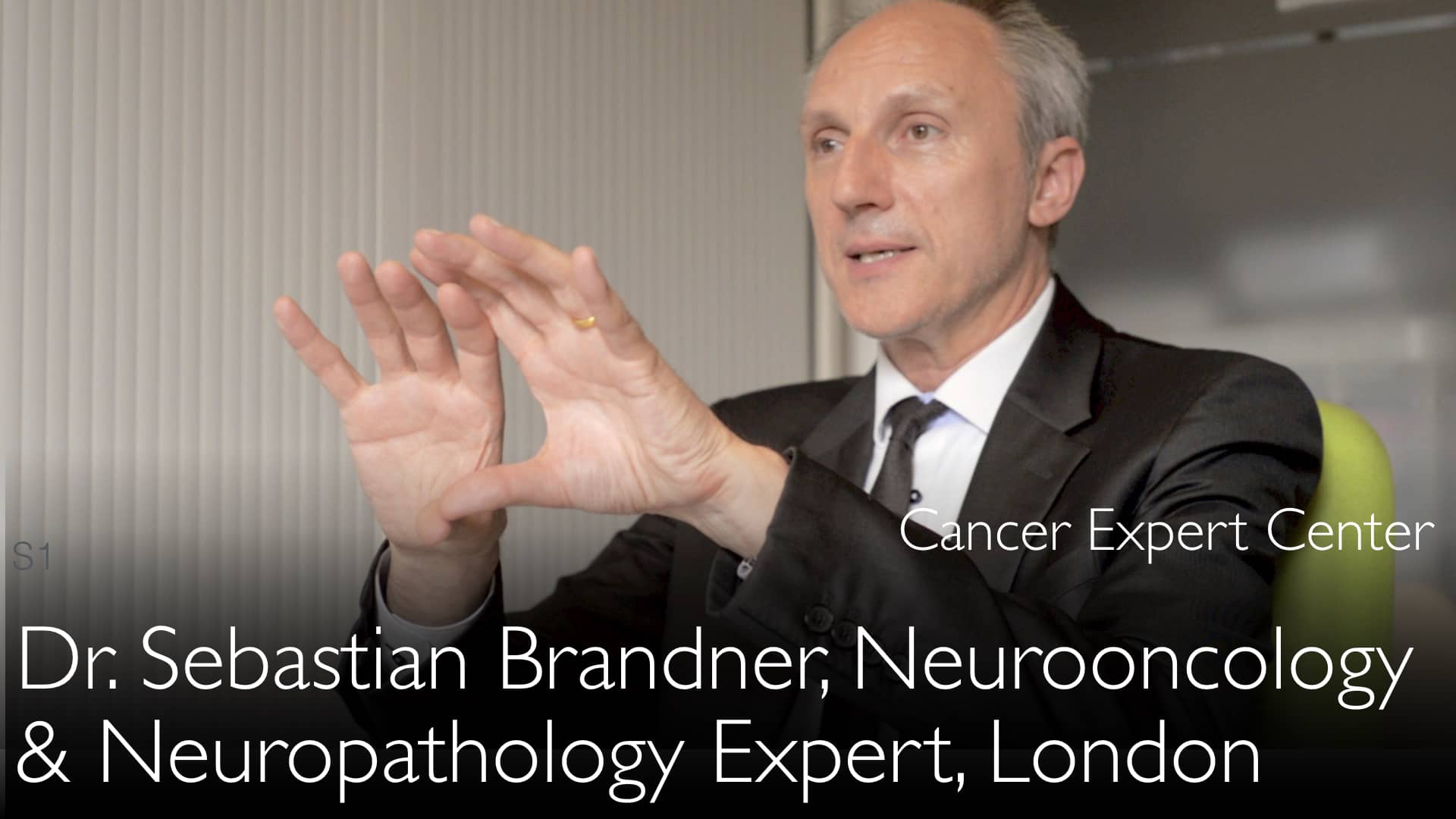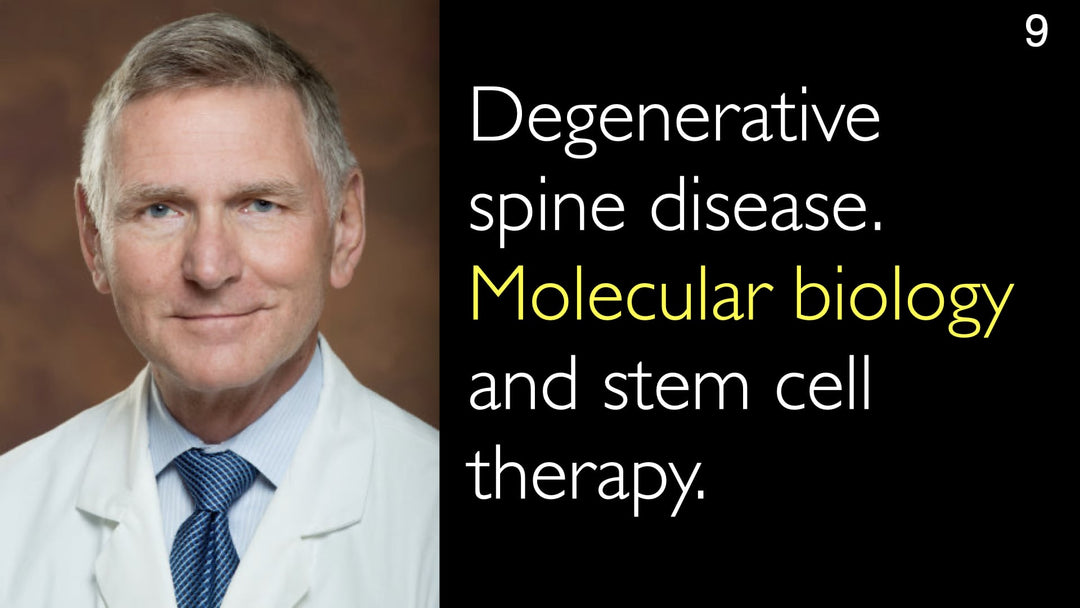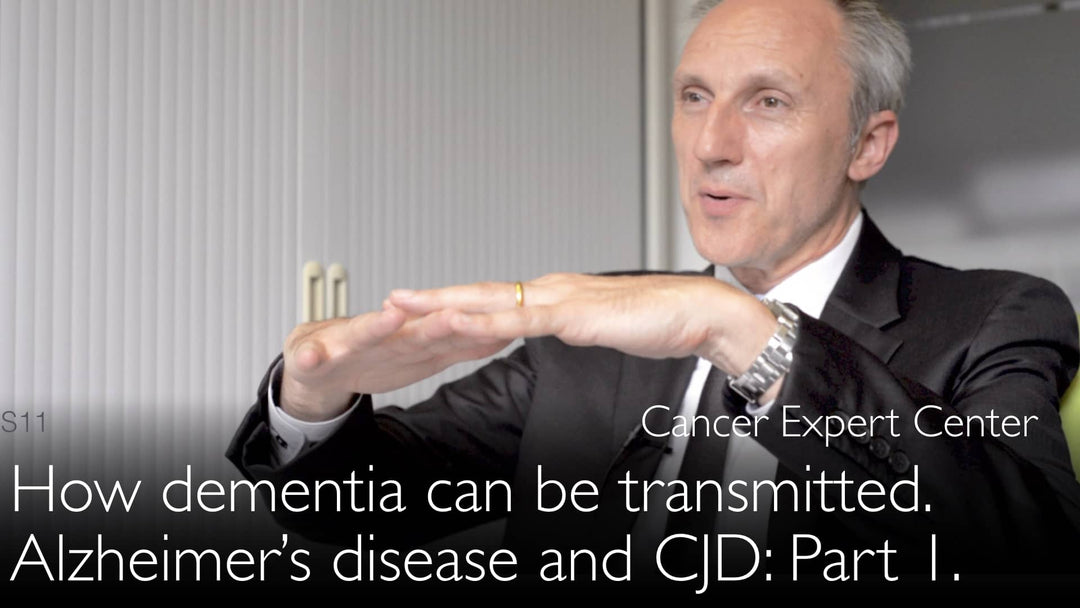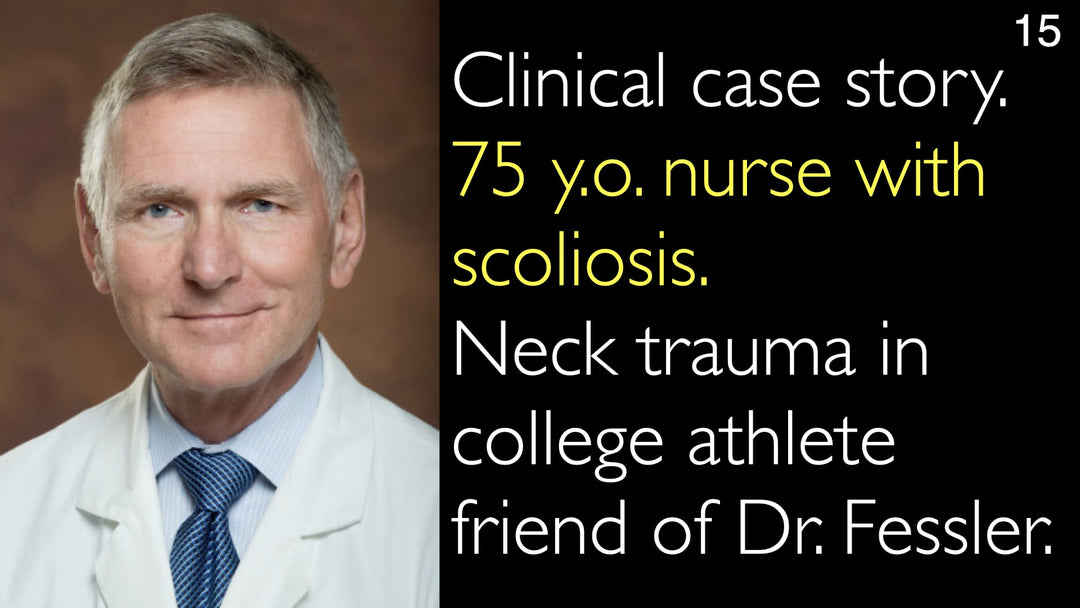Le Dr Sebastian Brandner, expert en neuropathologie, explique comment les diagnostics moléculaires avancés, comme le profilage de méthylation et l'analyse chromosomique, génèrent des « empreintes » précises pour le diagnostic des tumeurs cérébrales. Ces signatures permettent d’orienter les décisions thérapeutiques pour les gliomes, les oligodendrogliomes et d’autres tumeurs complexes du système nerveux central.
L'empreinte moléculaire révolutionne le diagnostic et le traitement des tumeurs cérébrales
Aller à la section
- Analyse chromosomique dans le diagnostic des gliomes
- Profilage de méthylation : la rétinographie des tumeurs
- Appariement en base de données pour la classification des tumeurs rares
- Applications cliniques pour les décisions thérapeutiques
- L'avenir du diagnostic des tumeurs cérébrales
- Transcript intégral
Analyse chromosomique dans le diagnostic des gliomes
Le Dr Sebastian Brandner explique comment les techniques moléculaires détectent des altérations chromosomiques cruciales dans les tumeurs cérébrales. La co-délétion 1p/19q dans les oligodendrogliomes constitue un marqueur diagnostique clé, identifiable par des méthodes de PCR quantitative qui comptent les copies chromosomiques. « Si l’on a 100 cellules et seulement 50 marqueurs, cela signifie que les 50 autres parties chromosomiques sont perdues », précise le Dr Brandner à propos de cette méthode de détection précise.
Ces altérations chromosomiques vont au-delà du simple diagnostic : elles offrent une valeur pronostique et orientent les choix thérapeutiques. La présence d’une co-délétion 1p/19q indique généralement une meilleure réponse à la chimiothérapie dans les oligodendrogliomes, comparé aux tumeurs dépourvues de cette signature génétique.
Profilage de méthylation : la rétinographie des tumeurs
Le Dr Brandner décrit le profilage de méthylation comme un outil diagnostique révolutionnaire de quatrième génération, examinant près d’un million de points de méthylation de l’ADN à travers le génome tumoral. « Ce n’est pas seulement une empreinte — c’est une rétinographie de la tumeur cérébrale », souligne-t-il, notant que cette technique surpasse l’histopathologie traditionnelle dans les cas complexes.
Les profils de méthylation agissent comme des commutateurs biologiques pouvant activer ou désactiver des gènes, influençant ainsi le comportement tumoral. La méthylation du promoteur MGMT, par exemple, prédit une meilleure réponse à la chimiothérapie par témozolomide dans les glioblastomes. L’algorithme de l’Université de Heidelberg analyse ces motifs complexes pour classer les tumeurs avec une précision inédite.
Appariement en base de données pour la classification des tumeurs rares
Face à des tumeurs diagnostiquement complexes comme les oligoastrocytomes anaplasiques, l’équipe du Dr Brandner compare le profil moléculaire à une base de données de référence regroupant 10 000 tumeurs cérébrales caractérisées. « Chaque groupe compte environ 20 à 40 tumeurs », indique-t-il, expliquant comment des algorithmes mathématiques apparient la tumeur inconnue à sa classification la plus probable.
Cette approche s’avère particulièrement utile pour les cas rares ou limites où la microscopie traditionnelle donne des résultats ambigus. Le système peut identifier des motifs génomiques caractéristiques — comme les amplifications des chromosomes 1 et 22 typiques du glioblastome — même dans des tumeurs aux caractéristiques histologiques inhabituelles.
Applications cliniques pour les décisions thérapeutiques
L’approche par empreinte moléculaire influence directement la prise en charge des patients en permettant un pronostic plus précis et un choix thérapeutique éclairé. Le Dr Sebastian Brandner souligne comment ces techniques aident à distinguer des tumeurs pouvant sembler similaires au microscope mais ayant des comportements cliniques très différents.
Par exemple, les gliomes mutés IDH ont généralement un meilleur pronostic que les tumeurs IDH de type sauvage, tandis que les oligodendrogliomes avec co-délétion 1p/19q répondent différemment au traitement que les astrocytomes. Ces distinctions guident les décisions concernant les schémas chimiothérapeutiques, les protocoles de radiothérapie et l’éligibilité aux essais cliniques.
L’avenir du diagnostic des tumeurs cérébrales
Le Dr Sebastian Brandner envisage une expansion continue des diagnostics moléculaires en neuro-oncologie. À mesure que les bases de données s’enrichissent et que les algorithmes s’améliorent, la précision de la classification tumorale augmentera, permettant potentiellement d’identifier de nouveaux sous-types aux réponses thérapeutiques distinctes.
L’intégration du séquençage du génome entier avec le profilage de méthylation pourrait révéler de nouvelles cibles thérapeutiques. Le Dr Sebastian Brandner note que les techniques actuelles, analysant près d’un million de points de données, ne représentent que le début de cette révolution diagnostique dans la prise en charge des tumeurs cérébrales.
Transcript intégral
Dr Sebastian Brandner: Un autre type de tumeur cérébrale est la tumeur mutée IDH. L’oligoastrocytome anaplasique ne présente pas cette perte de protéine nucléaire. L’oligodendrogliome anaplasique, quant à lui, présente normalement la co-délétion chromosomique 1p/19q.
Dr Anton Titov: Il s’agit donc d’une co-délétion qui entraîne une perte très spécifique d’un bras chromosomique en 1p et en 19q. Cela ne peut être détecté qu’avec de véritables techniques moléculaires.
Dr Sebastian Brandner: Un petit marqueur est apposé sur ces chromosomes. Le nombre de marqueurs est compté dans le tissu tumoral cérébral. Si l’on a 100 cellules et seulement 50 marqueurs, cela signifie que les 50 autres parties chromosomiques sont perdues. On parle alors, par exemple, d’une « perte 1p ».
Dr Sebastian Brandner: Nous utilisons une méthode de test légèrement différente. Nous prélevons l’ensemble du tissu tumoral cérébral et effectuons une PCR quantitative.
Dr Anton Titov: Cela permet de détecter s’il y a une ou deux copies de chromosomes, ce qui suffit dans la plupart de ces types de tumeurs cérébrales.
Dr Sebastian Brandner: Ensuite, il existe un grand nombre de tumeurs cérébrales plus rares, comme l’oligodendrogliome anaplasique et les oligoastrocytomes anaplasiques. Elles peuvent être bénignes ou malignes et sont vraiment difficiles à diagnostiquer. Parfois, nous sommes perplexes quant à la nature de ces tumeurs cérébrales.
Il existe une 4e génération de diagnostics moléculaires, basée sur une caractéristique qui affecte l’ADN des cellules tumorales. J’ai mentionné plus tôt que le promoteur MGMT peut être méthylé lorsque les cellules deviennent malignes. Mais cela ne concerne pas que le promoteur MGMT — les oligoastrocytomes anaplasiques, bien que rares, en sont un exemple. Ce phénomène se produit dans tout le génome.
La méthylation est un mécanisme biologique par lequel une cellule peut être activée, ou la croissance cellulaire de l’oligodendrogliome anaplasique peut être stimulée ou, au contraire, désactivée. Certaines caractéristiques cellulaires peuvent être promues ou réduites au silence, et parfois, la cellule ou le tissu devient malin.
Dr Sebastian Brandner: Le motif de ces marqueurs de méthylation change dans le génome de la tumeur cérébrale. Ces changements peuvent être captés par une puce à ADN, qui examine près d’un million de points différents à travers tout le génome.
L’équipe de l’Université de Heidelberg a développé un algorithme que nous sommes autorisés à utiliser. Nous pouvons extraire l’ADN de la tumeur cérébrale, le déposer sur une puce — ce qui est fait dans notre installation génomique locale — puis télécharger l’ensemble des données. Il ne s’agit que de quelques mégaoctets d’informations, représentant un peu moins d’un million de points de données à travers tout le génome de la tumeur cérébrale.
Ce n’est pas seulement une « empreinte ». C’est une « rétinographie » de la tumeur cérébrale, comme l’oligoastrocytome anaplasique.
Dr Anton Titov: On peut effectivement parler d’empreinte. Je pense que c’est une très bonne comparaison pour le diagnostic moléculaire des tumeurs cérébrales. Chaque tumeur cérébrale a sa propre empreinte, et seuls certains types partagent des caractéristiques communes avec d’autres tumeurs similaires.
Dr Sebastian Brandner: Mais il existe des archives de 10 000 de ces tumeurs cérébrales. Chaque groupe compte environ 20 à 40 tumeurs. Lorsque nous avons une nouvelle tumeur cérébrale difficile à diagnostiquer, comme un oligoastrocytome anaplasique, elle est comparée à cette base de données. Un algorithme mathématique indique alors à quelle classe de tumeurs cette nouvelle tumeur est susceptible d’appartenir.
Dr Anton Titov: Le rapport ressemble à ceci. Ce que vous voyez ici n’est pas la classification, mais cela montre à quoi ressemble le génome de la tumeur.
Dr Sebastian Brandner: Voici le génome. Ceci est le chromosome 1, et voici le chromosome 22. Vous pouvez voir que ce profil génique est amplifié — il y a plus de copies chromosomiques. Ce motif est caractéristique du glioblastome.
Un expert de premier plan du diagnostic des tumeurs cérébrales discute du diagnostic précis des gliomes, notamment l’oligodendrogliome et le glioblastome multiforme. Comment l’analyse des mutations aide-t-elle à prédire le pronostic et les résultats thérapeutiques dans les gliomes ?








